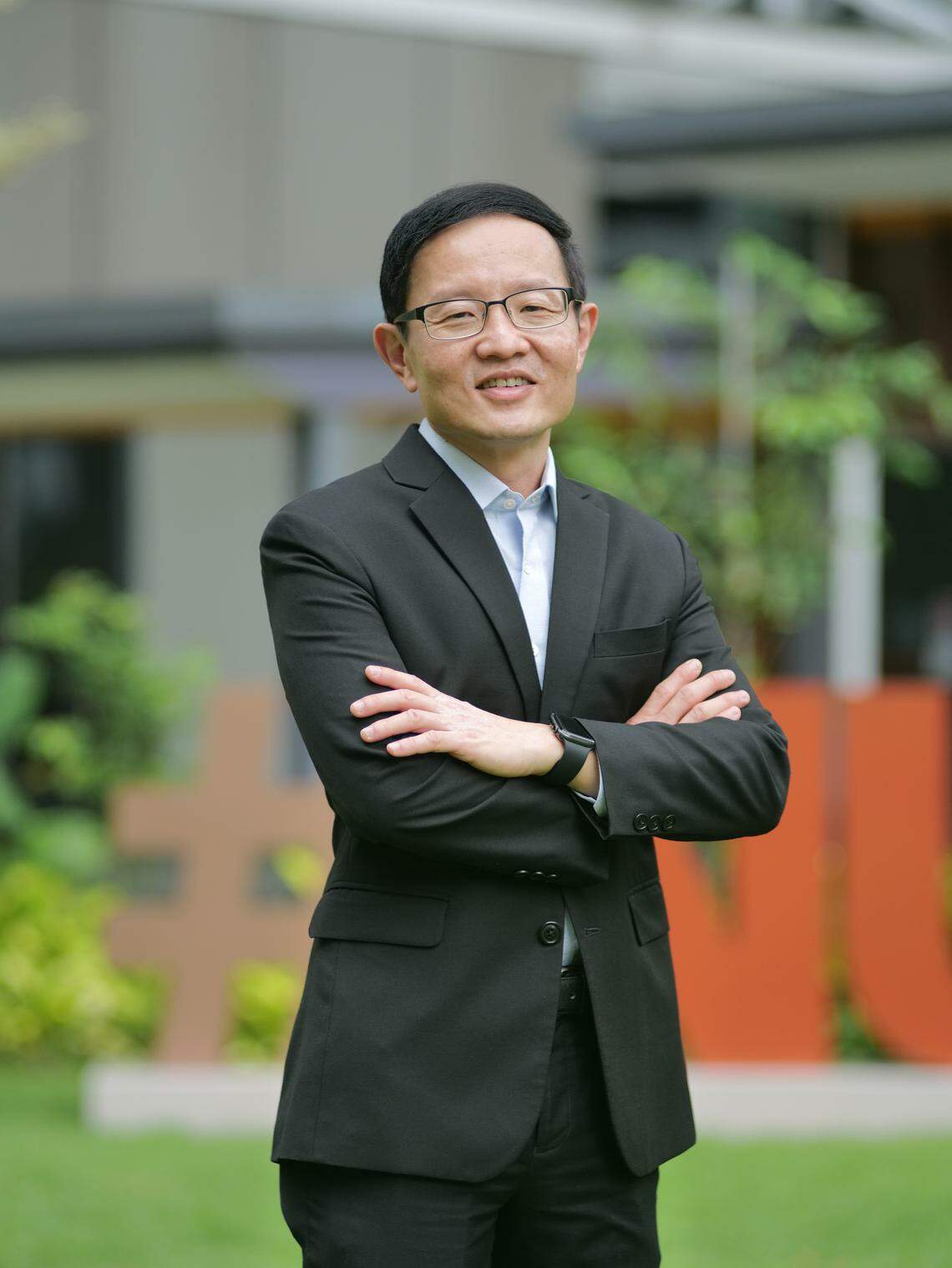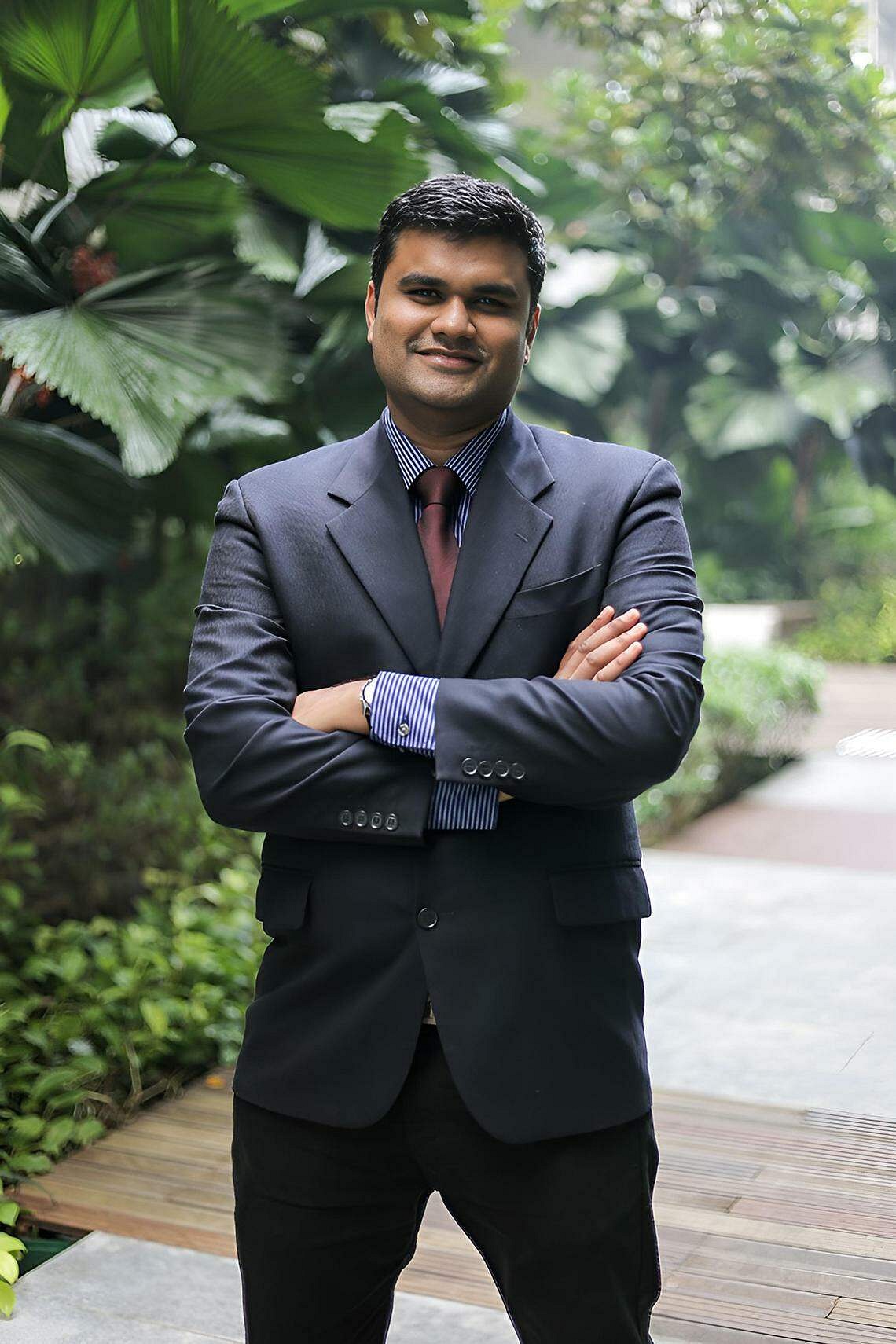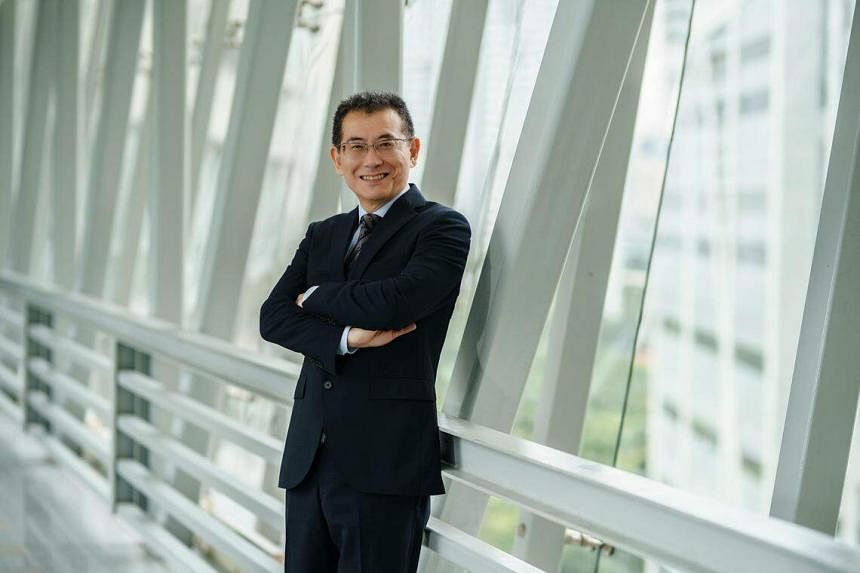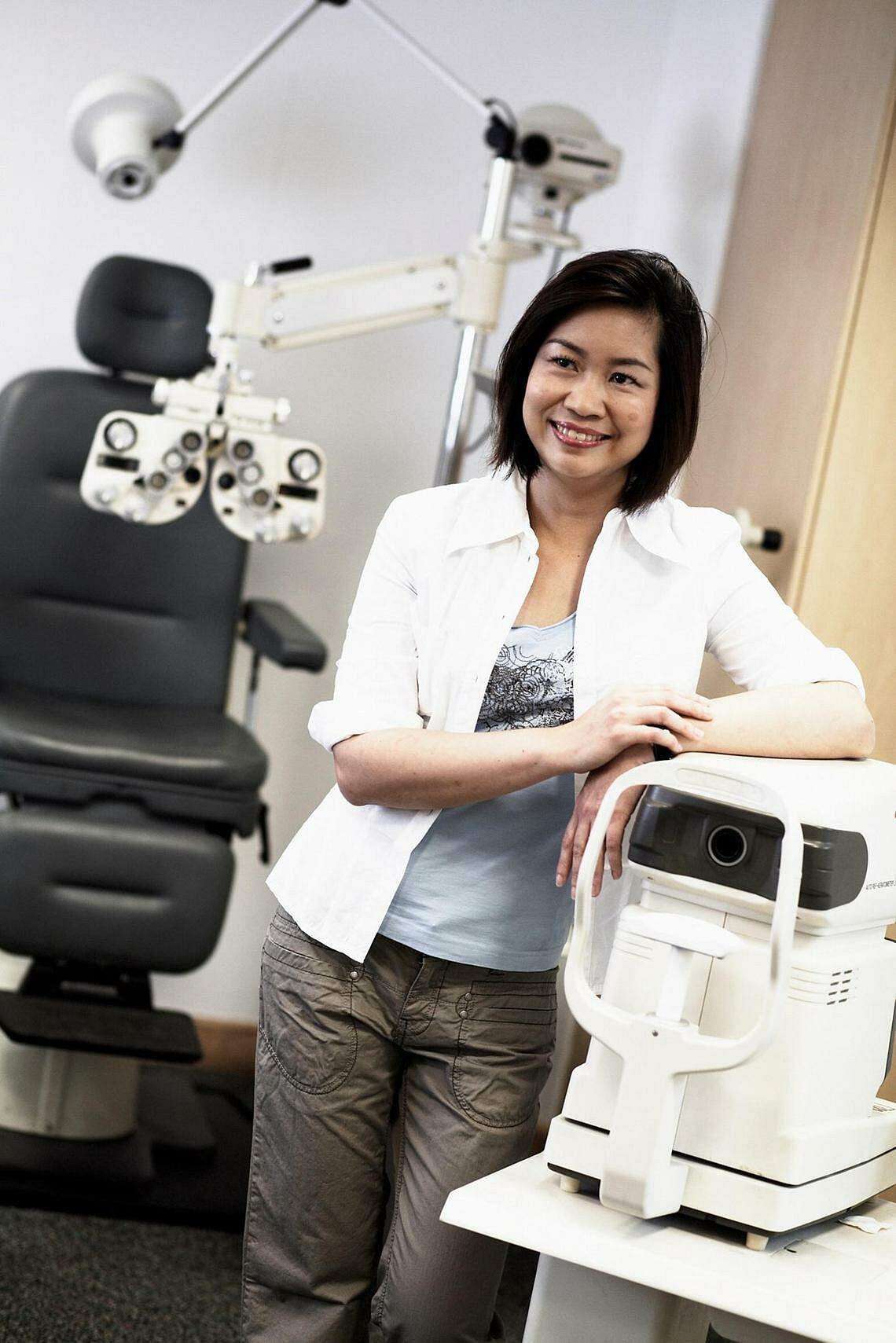SINGAPORE - On Oct 20, a fresh batch of top scientists will be honoured with the highest accolade for researchers and engineers in the Republic – the President’s Science and Technology Awards.
The Straits Times looks at a few past recipients who have helped to advance Singapore’s science scene, from addressing unmet healthcare needs to making strides in renewable energy.
Professor Lim Chwee Teck, 50s
President’s Technology Award, 2011

His award-winning invention
Professor Lim Chwee Teck from the National University of Singapore’s (NUS) department of biomedical engineering developed a biochip – a world first – that can sieve out cancer cells from blood drawn from patients. Cancer cells circulating in the blood are those that are shed from a tumour.
The biochip was created as an alternative to invasive tumour biopsies for detecting cancers and their spread. The device also allows doctors to track how well each patient is responding to treatments such as chemotherapy by periodically taking blood samples. This also guides personalised treatment for each patient.
Blood samples are run through the biochip laced with micro-structures to filter the cancer cells from regular ones. Cancers that can be detected through this method are those with cells that are larger and stiffer than blood cells, such as breast cancer, non-small cell lung cancer and prostate cancer.
Prof Lim’s device was eventually commercialised into the ClearCell FX1 System, a machine that was launched about a decade ago by medtech company Biolidics, which he co-founded. The machine, which retrieves cancer cells, has been approved by the US Food and Drug Administration and is being used in the United States, Europe, Australia and China.
“Someone once told me: ‘A doctor can treat only one patient at a time, but a biomedical technology developed by an engineer can treat thousands of patients, anywhere and at any one time.’ This is a great motivator for us as biomedical engineers to continue to push ahead with our innovations,” said Prof Lim, who is also director of the NUS Institute for Health Innovation and Technology.
The President’s Technology Award honours those who have made outstanding contributions that have led to major changes in the use or potential of technology.
His recent medical advances
Prof Lim, who has an entrepreneurial streak, yearns to address as many unmet healthcare needs as possible. Apart from cancer detection, he has made strides in areas such as Covid-19 diagnostics, diabetes and even the metaverse.
By 2019, he had co-founded six start-ups that commercialise technologies developed in his NUS lab.
When the Covid-19 pandemic hit, he and his team pivoted to virus testing to develop a portable polymerase chain reaction diagnostic system that can produce test results within an hour.
Prof Lim also recently led the creation of smart gloves that can convey touch and grip when interacting with objects in the metaverse. The gloves can be used to train medical students to perform surgical incisions or check for pulse through virtual reality.
He is currently expanding on his work in the “health metaverse”, to delve into telemedicine and patient rehabilitation.
“For example, in telemedicine, doctors will one day be able to ‘feel’ patients ‘physically’ via the metaverse. They could feel the patient’s pulse or palpate the patient, even when they are thousands of kilometres apart,” said Prof Lim.
Associate Professor Nripan Mathews, 41
Young Scientist Award, 2015

His award-winning discovery
Since the 1950s, silicon has been used to capture and convert sunlight into electricity in solar panels. Silicon forms the heart of a solar cell.
More than a decade ago, Associate Professor Nripan Mathews and his team were exploring new materials for solar cells when they were introduced to a man-made crystal called halide perovskite. Perovskite is processed from chemical solutions and can be printed onto plastic and glass sheets, similar to a T-shirt printing process.
Perovskite-based panels are known to be more flexible, colourful, lightweight, and cheaper to produce than silicon ones.
In 2013, Prof Mathews and his collaborators at Nanyang Technological University (NTU) became the first in the world to uncover why the crystalline structure is good at harnessing the sun’s energy. When they shot high-speed lasers at the material, electrons flowed through it without being impeded by flaws in the material, unlike other material made from liquid solutions. This allowed Prof Mathews’ team to print solar cells that can absorb more light and generate more electricity.
In labs, perovskite solar cell efficiencies have improved faster than any other photovoltaic material, from 3 per cent in 2009 to over 25 per cent in 2020, comparable to the performance of silicon panels. Solar cell efficiency refers to the amount of captured energy from sunlight that can be converted into electricity.
Since perovskite can be printed on plastic, it does not have to be lined rigidly on rooftops or fields, unlike silicon solar panels. It can conform to a building’s shape and can also double as stained glass windows since it can come in different translucent colours.
“Perovskites can be printed easily on glass allowing us to target colourful power-generating windows,” noted Prof Mathews, who is a faculty member at the School of Materials Science and Engineering.
Perovskite solar cells are on the cusp of commercialisation worldwide. One promising area is in creating “hybrid” solar panels where silicon and perovskite cells are sandwiched together, increasing the overall efficiency to 30 per cent or more.
“This allows the various components of the sunlight to be absorbed by each layer resulting in very high power generation,” explained Prof Mathews.
The Young Scientist Award is given to individuals aged 35 and under who have shown potential to be world-class researchers in their fields of expertise.

His ongoing projects
With the amount of e-waste from solar panels expected to rise, Prof Mathews helped develop methods to upcycle the silicon-based portions of used panels into lithium-ion batteries.
Also, he is not done with perovskite and is exploring other novel uses for it. Since the material is also good at emitting light, his team has explored making light-emitting diode devices with them.
Recently, his team has figured out how to make perovskite devices that can “remember” and “learn”, mimicking parts of the human brain.
“We are exploring how such brain-like electronic devices can be used to manage a lot of data to make quick decisions,” he added.
Professor Liu Jian Jun, 60
President’s Science Award, 2020

His award-winning discovery
Professor Liu Jian Jun delved into the long overlooked realm of Asian genetics, to shed light on diseases affecting people on the continent.
Recognising the limitations of applying Western genetic studies to Asian populations, Prof Liu worked to understand the genetic intricacies unique to Asians.
He wanted to find out why nose cancer, or nasopharyngeal carcinoma, is called “Cantonese cancer” as it is more prevalent in southern China than in other parts of the world.
He found that a unique strain of a common human virus – the Epstein-Barr virus – was more widespread in people from the southern China region. Individuals with the strain are 11 times more likely to develop nose cancer than non-carriers.
The unique strain appears to have originated in Asia. As at 2019, over 40 per cent of individuals in southern China are infected by this strain.
“Our discovery helped explain why only a small number of individuals (those carrying the strain) will develop nasopharyngeal carcinoma, while over 95 per cent of the human population is infected by the Epstein-Barr virus,” said Prof Liu, who is acting executive director of the Agency for Science, Technology and Research’s Genome Institute of Singapore.
“Our discovery has also helped to explain why nasopharyngeal carcinoma has much higher prevalence in southern China than other regions of the world,” he added.
This could make it easier to identify people at high risk of getting the cancer and help them through early intervention.
In 2017, he initiated the effort to map the complete set of genes of 5,000 Singaporeans. That paved the way for the ongoing mega project of sequencing the genome of 100,000 Singaporeans by 2025.
The President’s Science Award is given to those who have made outstanding contributions that have transformed one or more science and technology fields.
His ongoing work
Prof Liu and his team have started on a project to study Epstein-Barr virus strains in Singapore and Malaysia.
“We are aiming to discover risk strains for nasopharyngeal carcinoma in South-east Asian populations and further explore... early diagnosis and personalised treatment.”
He is also working on creating a human reference genome for the Asian population.
“There are several versions of human reference genome sequences, but all were created by using samples from Western populations. Given the genetic difference between Asian and Western populations, it is important to generate our own for (the) Singapore population,” said Prof Liu.
Professor Saw Seang Mei, 59, and team
President’s Science Award, 2019
Her team’s breakthroughs

Professor Saw Seang Mei and three researchers from the Singapore Eye Research Institute (Seri) were recognised for their pioneering work in the field of myopia research, in their efforts to expunge Singapore’s status as the myopia capital of the world.
Myopia, or short-sightedness, is caused by an elongation of the eyeball.
The team was the first to identify low-dose atropine eye drops as a viable treatment option that is both safe and effective for long-term use in children. To manage myopia, the eye drops traditionally contained a higher dose of the chemical atropine. This caused side effects in children such as increased sensitivity to glare from the sun and blurred close-up vision.
The researchers conducted a trial in the early 2000s, showing that a 0.01 per cent concentration of atropine can also work, slowing down myopia by 50 per cent in children aged six to 12. This dosage led to fewer side effects.
The award-winning team also included Associate Professor Audrey Chia, the late Professor Roger Beuerman and Adjunct Professor Donald Tan, who held positions at Seri.
The researchers also initiated public health messages that encourage more outdoor activity and better eye habits among children.
“The prevalence of myopia in Singapore is one of the highest in the world in young adults, at 83 per cent,” said Prof Saw, who heads Seri’s Myopia Unit.
The team’s efforts have helped decrease the rates of myopia and myopia-related blindness in Singapore.
Her recent research
Prof Saw, who specialises in the epidemiology of eye diseases, helped identify several childhood predictive markers to narrow down myopic children who are at risk of developing high myopia and eyesight-threatening complications later in life.
High myopia refers to short-sightedness exceeding -5.00 dioptres or 500 degrees, where patients’ eyeballs are longer than usual.
She also helped to develop a method to measure a child’s genetic risk of myopia with cheek or saliva DNA swabs.
“If the (risk score) is higher, the child is more likely to have high myopia in the later years,” added Prof Saw, who is also a faculty member at the NUS Saw Swee Hock School of Public Health and Duke-NUS Medical School.


